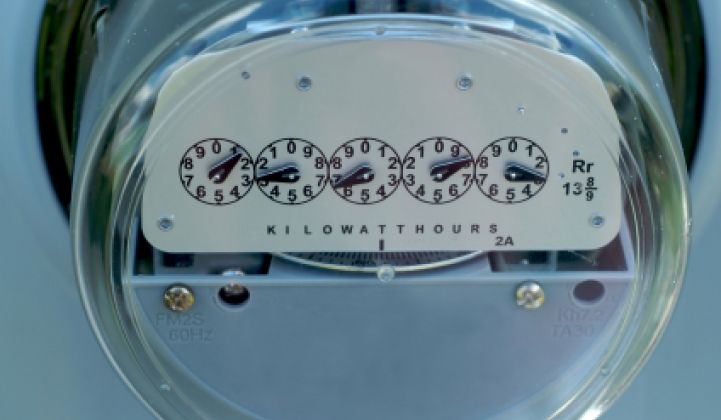The renewable energy field is like a floppy Labrador pup growing into its adult frame. Renewables like solar and wind are becoming a significant player in energy markets, but there are still some growing pains and a lack of coordination.
Landowners with agricultural or farming operations can now really take advantage of renewables, thanks in part to some important changes on the near horizon. Specifically, landowners can now devote the part of their land that is most suitable to wind or solar to power generation and will be able to credit the production from the wind or solar to their most expensive meters in many circumstances through net metering. This is a powerful new tool for avoiding utility electricity purchases.
In many cases today, behind-the-meter solar or wind power projects can pay for themselves in just a few years, though the details vary a lot from site to site and customer to customer.
Net metering has become a bit of a battle in California, with utilities and some other entities claiming that net metering is a subsidy costing regular ratepayers too much, and pushing to roll back the policy at least in part. This is a complex debate, but my feeling is that in the medium to long term, we’ll know with more certainty whether the deferred upgrades to the grid, made possible by net metered energy projects, will pay for themselves.
We’re about to see a very powerful new tool go into place here in California. Various expansions of net metering have taken place in the last few years. The latest expansion, about to be finalized by the California Public Utilities Commission, was made possible by SB 594. This new version of net metering, known as “meter aggregation,” allows landowners to choose the best location for solar or wind on their property and then use the power generated to offset their bills from any of their electricity meters on the same or contiguous properties. Contiguous properties must be owned, leased, or rented by the same owner as the property where the energy facility is located. (This new tool is sometimes also referred to as “virtual net metering.”)

Fig. 1. Traditional net metering (left) and aggregate (right) net metering compared.
This new metering aggregation option is limited to energy facilities of 1 megawatt or less, but this total can include a number of different systems on the same property as long as the combined size doesn’t exceed 1 megawatt.
Each meter that is aggregated is offset by power produced from the renewable energy facility in proportion to the whole. For example, if three meters are aggregated to draw power from a 1-megawatt solar facility and the first two constitute 25 percent each of the total of the three meters, and the third 50 percent, then the solar power produced will be used to offset the utility-provided electricity from each of these meters in the same proportions.
The full details of this program will be made public in a few weeks, once the utilities make their advice letter filings, which are required within fourteen days of final approval of resolution E-4610. That final approval should come later in September or early October. It will take a few months for final approval of the utility advice letter filings, so we can expect the program to be open for business later in 2013 or in early 2014.
Combining metering aggregation with state incentives that are available still for many kinds of renewable energy projects makes going solar or going for wind an even more viable proposition than it has already been in the last few years.
***
Tam Hunt is owner of Community Renewable Solutions, a consultancy and law firm specializing in community-scale renewables. Community Renewable Solutions can help developers navigate this complicated field and provide other development advice relating to interconnection, net metering, procurement and land use.



